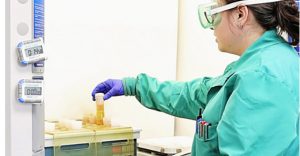
As we noted in our last blog, the USP has fully promulgated the regulations for testing for elemental impurities in drug products, effective January 2018.
ICH Q3D advocates the use of a risk-based approach to assessing the potential for the presence of elemental impurities in drug products. It is the responsibility of pharmaceutical manufacturers to demonstrate, via risk assessment, that the drug product is compliant with ICH Q3D guidelines.
Many in the pharmaceutical industry are inquiring what the risk assessment means, particularly if they must test all of their products, which can have thousands of ingredients.
The FDA offers specific guidelines on their website regarding Elemental Impurities in Drug Products. The ICH Q3D Training Module 5 is also an excellent resource, in that it specifically addresses approaches to Product Risk Assessment. There are several considerations that make risk assessment challenging, namely, defining whether your particular approach should focus on Component Testing versus Finished Product testing, along with the various potential sources of elemental impurities such as water, excipients, manufacturing equipment, the drug substance itself, and the container closure system. The way the product is administered – oral, parenteral, or inhaled– must also be considered with testing.
A drug-product risk assessment can use prior knowledge of the input materials to demonstrate that the risk of significant elemental impurity levels is low across multiple batches. When the risk assessment concludes that elemental impurities are below 30% permitted daily exposure (PDE), this is generally regarded as the control threshold under which no additional controls are deemed necessary. When levels exceed this threshold, further analysis, testing and controls must be considered.
The FDA supports and encourages early adoption before the January 2018 implementation date. SGS offers raw ingredient and finished product screening throughout the risk assessment process, as well as method development and validation. Learn more via our website, or simply contact us today to discuss your specific program for addressing the Elemental Impurity guidelines.



